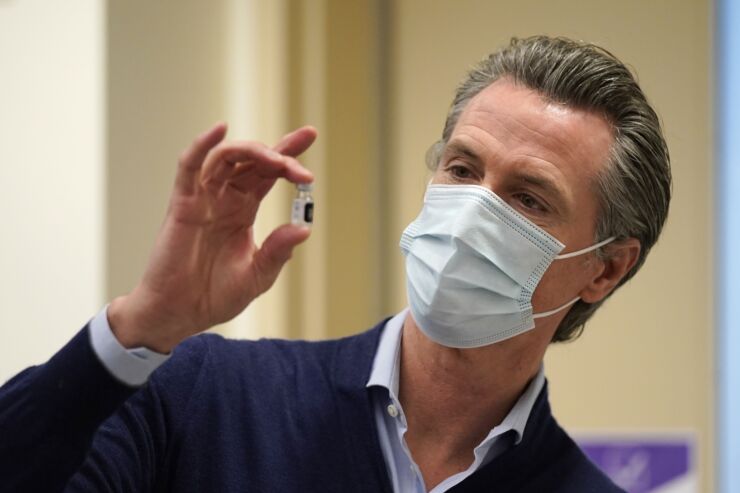The continued escalation of COVID-19 cases in California and the resulting economic volatility took precedence as Gov. Gavin Newsom unveiled his $222.2 billion
Newsom wants to spend some of the money from a $26 billion income tax windfall, but also set aside $22 billion for reserves while pinning some hope on a larger aid package from President-elect Joe Biden and the soon to be Democratic-controlled House and Senate.
He also proposed to use $9.5 billion to pay down retirement liabilities: $3 billion in 2021-22 and $6.5 billion over the next three years.
The proposal dedicates $14 billion to coronavirus relief efforts in healthcare, economic stimulus and education programs. It also anticipates a $15 billion surplus.
“Our budget reflects the realities of the pandemic-induced recession, and this pandemic-induced reality,” Newsom said. "It addresses the income and race-based disparities in the state that have been exacerbated during the pandemic."

The governor had said
He also announced a Golden State Stimulus that would provide $600 in cash directly to 4 million low-income Californians, including those excluded from the federal stimulus, like undocumented households that file taxes with an individual taxpayer identification number.
The governor also asked lawmakers to extend protections against evictions to ensure California’s $2.6 billion share of federal rental assistance be distributed according to the greatest need and with accountability.
“Through the Golden State Stimulus, Californians who have been impacted by this pandemic will get help to provide for their families and keep a roof over their heads,” said Governor Newsom. “This plan will provide relief for Californians in need by distributing $600 rapid cash support — for some, at least $1,200 when coupled with federal relief — and extend the eviction moratorium.”
He said he wants to get 4 million checks out to people within three weeks of his signing this package.
“All of this is happening in real time,” Newsom said. “It’s an incredible moment in terms of anxiety around the pandemic, but also incredible in terms of opportunity.”
Despite the current challenges, Newsom said the state is in a better place than it was last summer when it faced what was projected as a $54 billion deficit.
This year’s $227 billion spending plan represents a balanced budget with $34 billion in reserves and surplus, he said.
Legislative Analyst Gabe Petek released a report in November estimating the state would have a one-time
Income taxes came in better than anticipated because affluent Californians, who provide the bulk of income taxes, have largely maintained their income streams by working from home.
Newsom said his budget would add $5 billion to housing production, through tax credits, loans, infrastructure grants and more. It would also spend $1 billion for wildfire resilience to protect existing homes, he said.
He proposed $4.4 billion for COVID-19 relief split between $373 million for vaccines, $473 million for contact tracing and $2 billion for testing.
He also proposed $1.75 billion to purchase motels and hotels and develop mental health services for homeless people, $1.1 billion through Medi-Cal to provide wrap-around services to homeless people including mental health and case management services and $2 billion to safely reopen schools.
The budget proposal would dedicate nearly $90 million for K-12 in the state.
It would also dedicate $10 billion to infrastructure through spending under Senate Bill 1, a gas tax bill approved by the Legislature in 2017.
Senate Republican Leader Shannon Grove, R-Bakersfield, and Senator Jim Nielsen, R-Tehama, vice chair of the Senate Budget & Fiscal Review Committee sent a
“The governor’s shutdowns and COVID-19 challenges have made it difficult for millions of Californians,” Grove and Nielsen said in the joint statement. “More than 19,000 small businesses have already closed their doors for good and with them are countless families who depended on that income to pay for food housing and other necessities.”
Republicans have protested Newsom's shutdowns as California's COVID-19 death toll spiraled past 28,000.
He ended his budget address on a sober note, however, saying that everyone needs to be mindful that economic forecasts are very, very tenuous given the realities of the pandemic.





